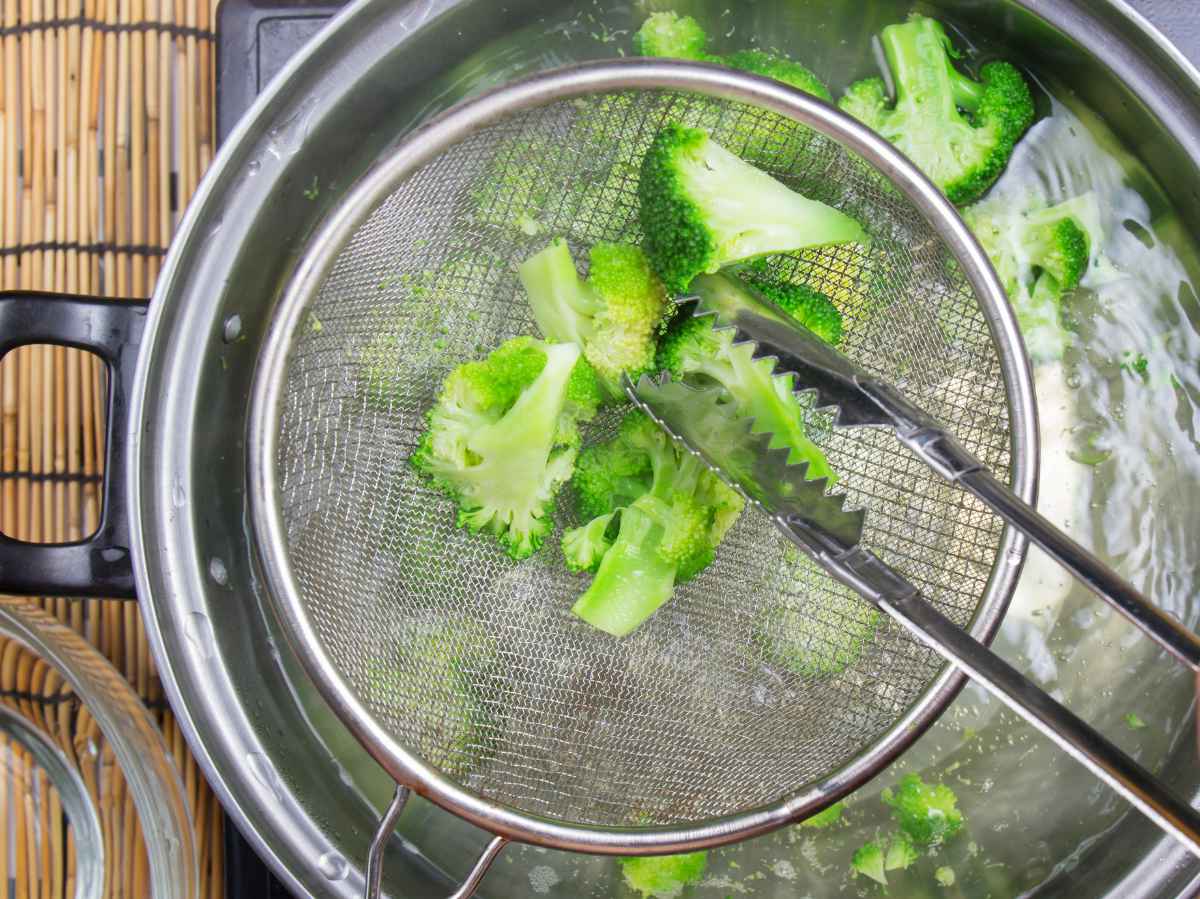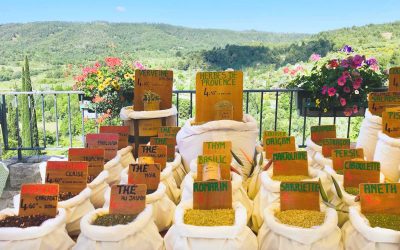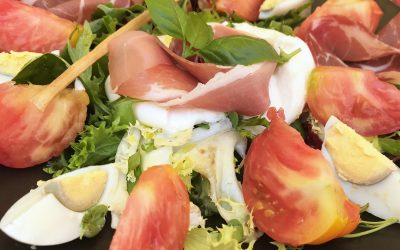Blanching is the process of boiling fresh vegetable for a short time, which is then rapidly cooled. It preserves the crispness and bright color of vegetables, and it’s particularly useful for preserving the brightness of vegetables like green beans, broccoli, and zucchini.
The word “blanche” in French means to whiten. In this case however, it doesn’t mean to whiten, but to clear and purify. Blanching vegetables is a common French cooking technique which can help to remove strong bitter flavors from foods, while killing bacteria and preventing discoloration.
Blanching is typically done in water that is 215 F° (100C°) or higher. Blanching is also done before freezing or canning vegetables to preserve the flavor and nutrients.
It sounds complicated, but it’s actually a pretty simple method that you can use for a variety of recipes, as well as to eat directly like in a crudité platter. So let’s get to the top tips to blanch those vegetables, shall we? Allons-y!
How to blanch vegetables
Blanching vegetables is not hard, you just need a large pot to heat the vegetables, and a large bowl with ice to cool it down and stop it from cooking too much.
Once you have that set up, follow the following steps for perfectly blanched vegetables:
- Prepare a large pot of boiling water, and add a dash of salt.
- Fill a 2nd large bowl with ice water and keep it on the side.
- Remove the tough bottoms and any extraneous portions of the vegetables as described above.
- Put each set of trimmed vegetables into the boiling water, one at a time.
- Stir and let cook for a couple of minutes. (See precise timings per vegetable below.)
- Remove from the boiling water and immediately plunge in the ice water to stop the cooking process.
- Repeat the process for all the vegetables that you want to cook.
- Once all vegetables are blanched, store them in covered containers until you are ready to use or freeze.
How to prepare the vegetables
If you are not sure how to prepare the vegetables before blanching, here are a few tips for some common vegetables:
| Vegetable | How to cut and prep |
|---|---|
| Broccoli and cauliflowers | Cut into small branches and blanche |
| Green Beans and Snap Peas | Trim the edges off and blanche |
| Artichokes | Cut off the thorns and tip of each leaf. Chop the artichokes into thin strips and then blanche. |
| Zucchini (Courgette) | Cut off the ends and chop in desired shape (i.e. slices, quarters, length-wise, etc.) and then blanche |
How long to blanch the vegetables
While it is not a precise science, there are certain vegetables that should remain longer in the water than others. In addition, wome of this depends on the size of the vegetable.
However in general, you can use the following guidelines to decide how long to blanch each vegetable
| Vegetable | Time to blanch |
|---|---|
| Asparagus | 2-4 minutes depending on size of the stalks |
| Artichokes | 4-5 minutes |
| Snap Beans and Green Beans | 3 minutes |
| Lima Beans and Pinto Beans | 2-4 minutes |
| Broccoli and Cabbage | 2-3 minutes |
| Okra | 3-4 minutes |
| Zucchini | 1 minute |
Can you blanch vegetables in the microwave?
Blanching vegetables in a microwave is not as effective as over the stove, as the vegetables wilt and lose their color and texture.
Do you salt water when blanching vegetables?
Yes, you can if you wish. It can help certain vegetables hold their nutrients longer.
Should you blanch vegetables before freezing?
Blanching helps lock in color and flavor, as well as preserve the vitamins, nutrients, flavors and textures. It also helps the vegetables keep the flavor.
Can you freeze fresh vegetables without blanching?
It is mostly only green vegetables that benefit from blanching before freezing.
Other vegetables like carrots, bell peppers, corn, potatoes, butternut squash, etc. do not need to be blanched.


If you enjoyed that article, you may want to read more about the basics of French cooking. A bientôt!




